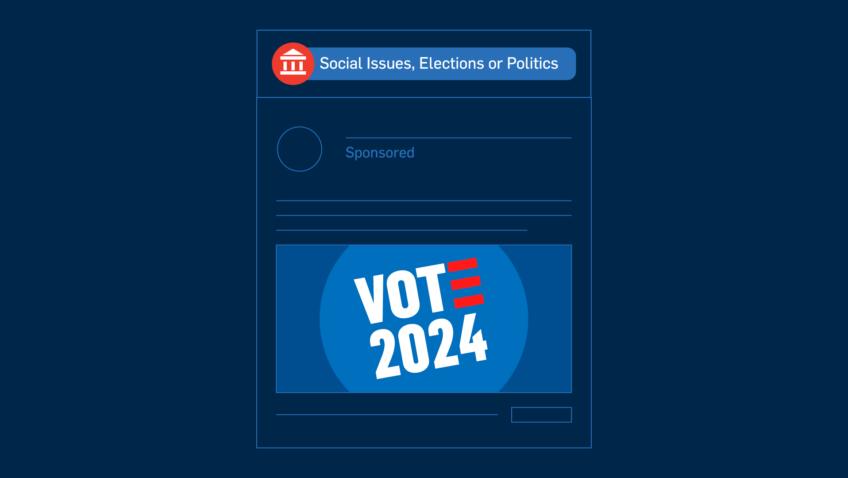How Do I Maximize Year-End Giving Campaigns?
Ask CI
As we approach the end of the year, your thoughts have likely turned to your Nutcrackers and Christmas Carols (and if they haven’t yet… what are you waiting for?!). But there’s likely one other end-of-year effort on your mind: fundraising.
The winter season brings an uptick in donation requests as non-profits work to meet their goals before the New Year. How can you make your organization’s fundraising efforts shine when inboxes are inundated with giving asks?
TIP #1: THINK ABOUT POSITIONING
With seemingly every non-profit in existence asking for donations around this time of year, people understandably get tired of the constant stream of organization-centered asks.
Skip language like “We need your help” and “Here’s how you can help us.” Instead, turn the focus back to your audience and make sure your copy shows impact.
- In Action: We ran a fundraising campaign on Meta with the Minneapolis Institute of Art (Mia) last December that used audience-focused language like “Share the wonder of art with a gift membership.” This type of inclusive language paid off; all audience segments in the campaign drove conversions, including acquisition groups less familiar with Mia.

- Results:

In Action: A similar approach? Directly involve audiences through second-person language. San Francisco Opera employed “you” phrasing in their end-of-year fundraising campaign that we ran on Meta to excellent effect. For example, one of the posts began: “You too can play a role in the artistry of SF Opera’s new century.”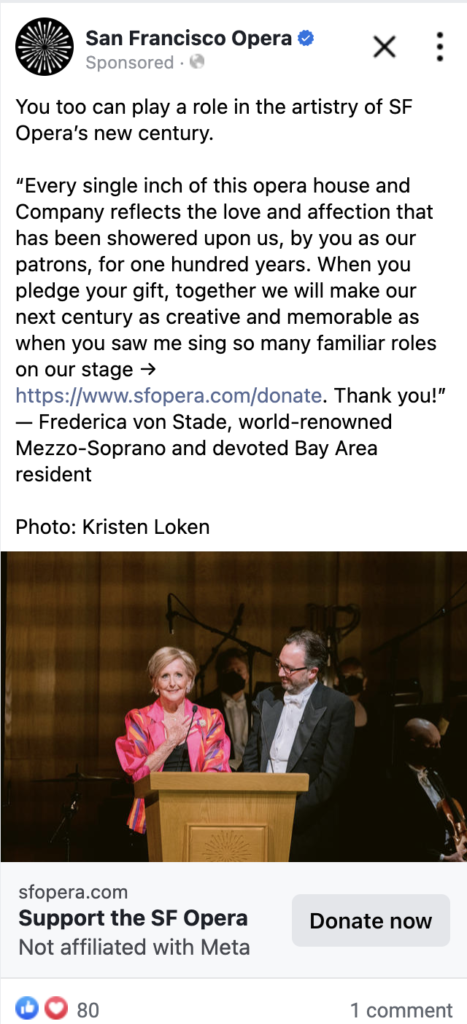
- Results:
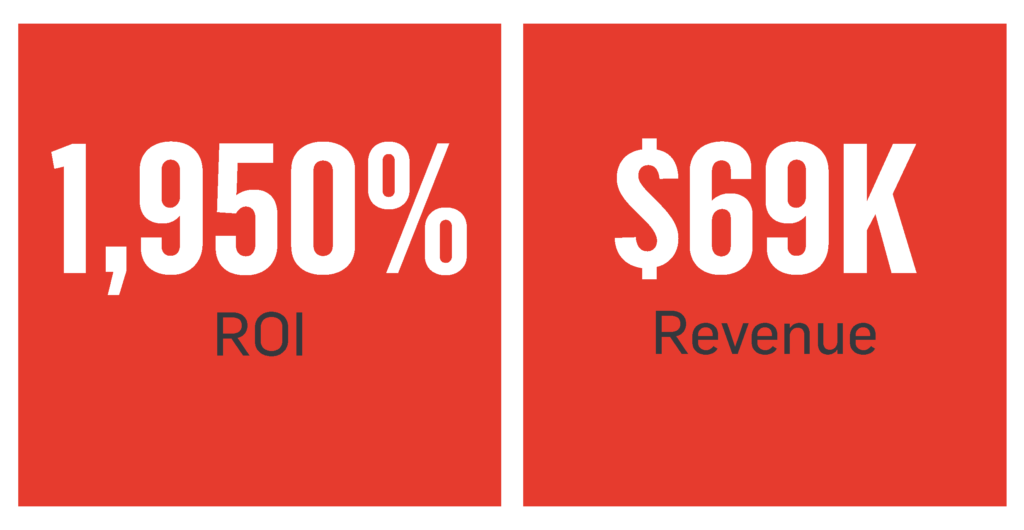
TIP #2: DON’T BE AFRAID TO EXPERIMENT
Fundraising campaigns are excellent opportunities to test segmentation strategies and find what works for your audience.
Many arts organizations run large fundraising campaigns twice yearly: at the end of the calendar year and the end of the fiscal year. That means there are plenty of opportunities to experiment and compare campaign performance.
- In Action: We worked with the Chicago Symphony Orchestra (CSO) on their end-of-calendar-year Meta campaign in December, employing first-party data to narrow the audience and concentrate solely on CSO’s closest circle. Then, when we launched CSO’s end-of-fiscal-year campaign in July, we broadened the target audience to include individuals who had recently interacted with CSO’s Meta content.
- Interestingly, this expanded audience segment had the lowest cost per website view of any audience in the campaign. We identified this cost-effective group for CSO to prioritize in future campaigns by switching up the segmentation strategy.
- Results:
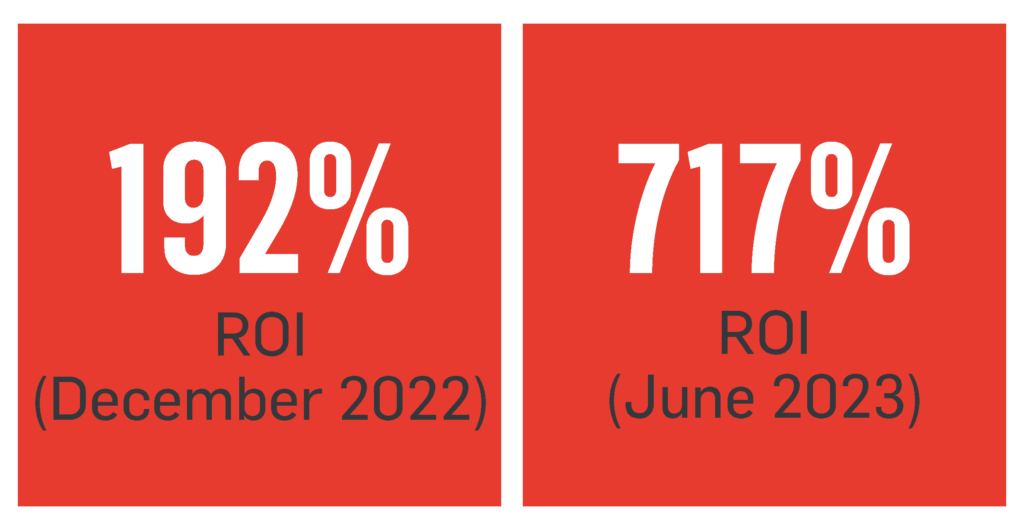
TIP #3: MAKE FUNDRAISING A YEAR-ROUND EFFORT
While it’s perhaps too late for 2023, here’s something to consider for next year: fundraising shouldn’t be limited to December.
We aren’t suggesting you run a year-round fundraising campaign but rather bolster your institutional branding efforts as much as you can throughout the other months. By showing your audience all the incredible work you do all year, you make your job a lot easier when it comes time for an ask later.
- In Action: We’ve been running an institutional branding campaign on Meta for Cincinnati Playhouse in the Park since 2019. Last year, we added paid search, as well. When it comes time for the Playhouse’s end-of-year fundraising efforts, they don’t have to work as hard to convince audiences why donations should be directed to them. They’ve already laid that groundwork by consistently showcasing their programming, education initiatives, community work, and more through the branding campaign.
- Results:
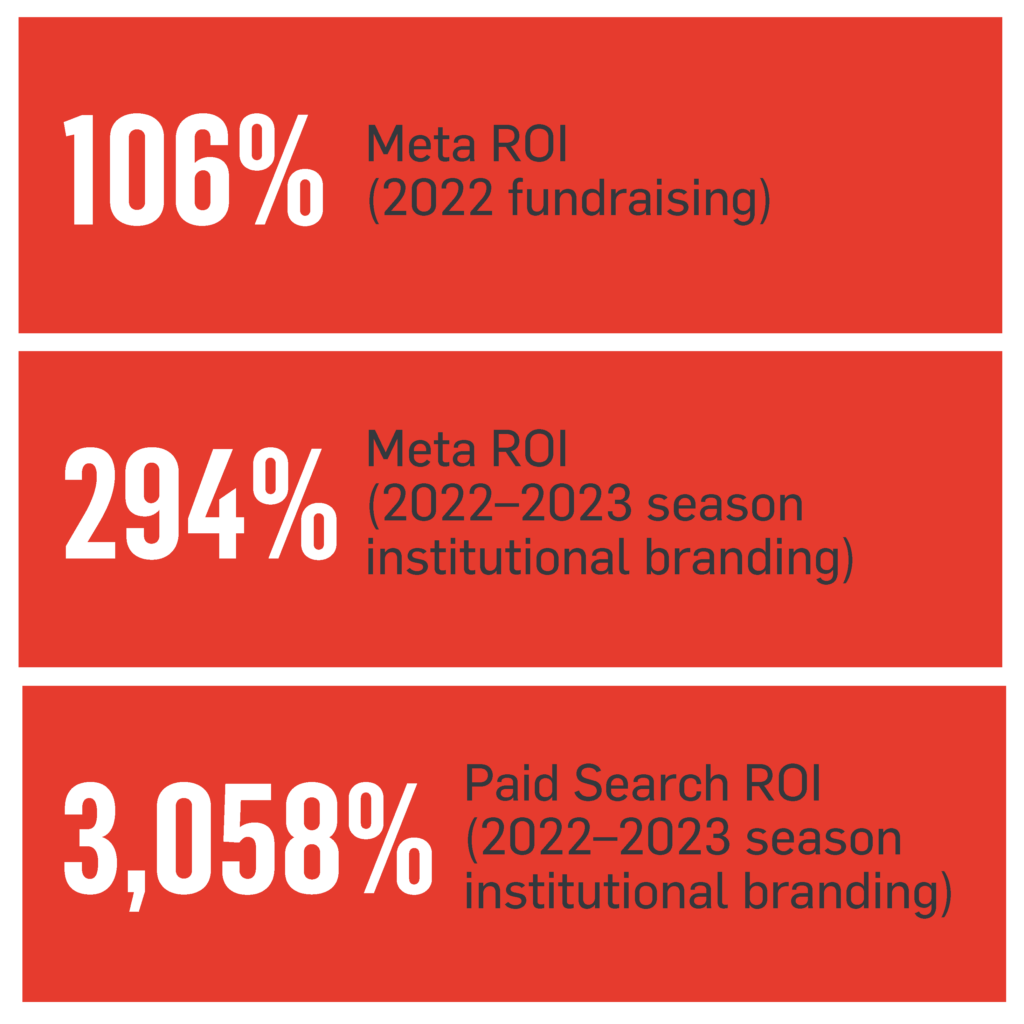
ELEVATE END-OF-YEAR CAMPAIGNS
In the season of giving, audiences are swamped with endless donation asks. Don’t let your organization’s fundraising efforts fall through the cracks. Be thoughtful about messaging and experimentation, and find ways to set your development team up for success by laying the groundwork year-round.










